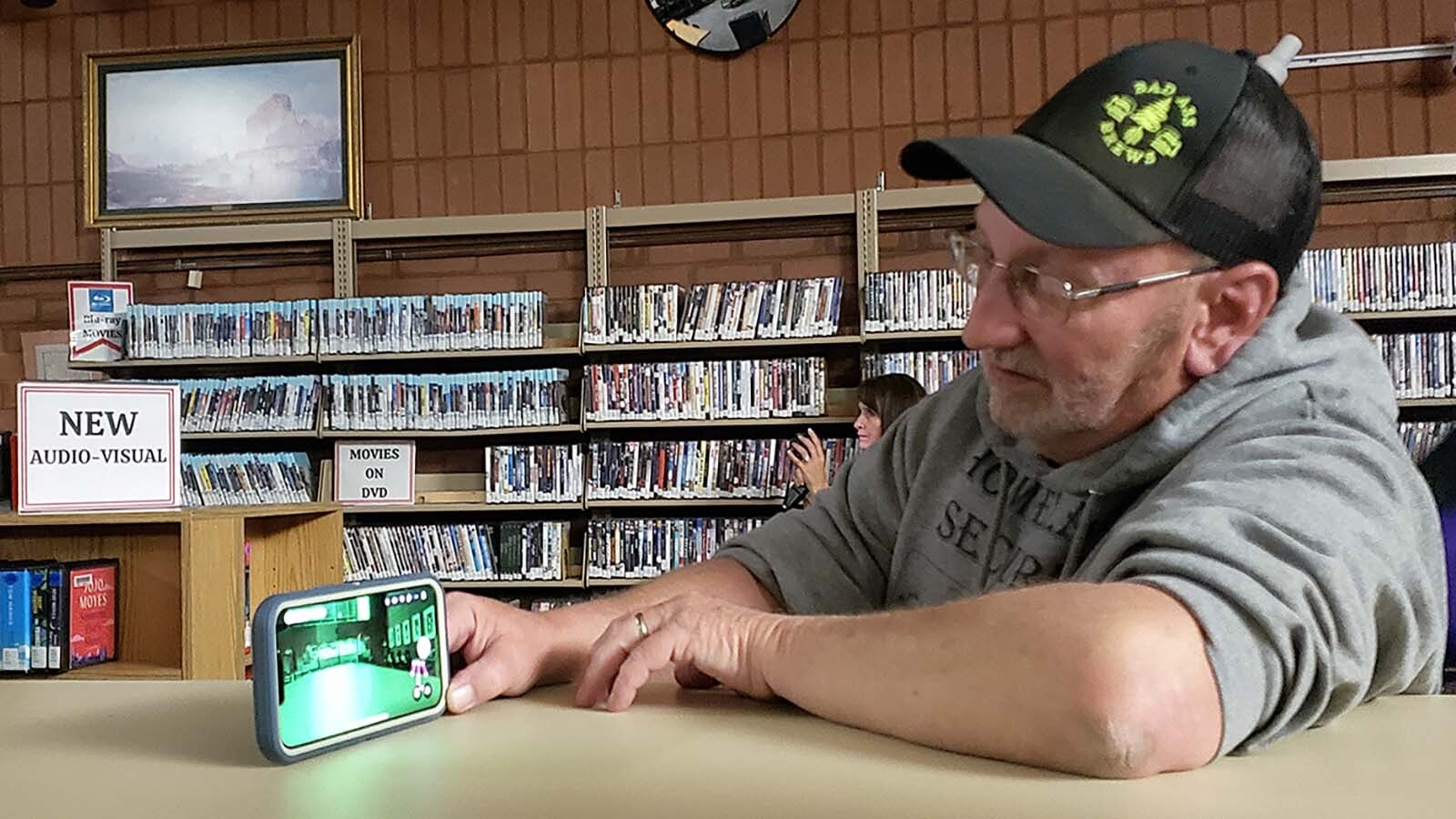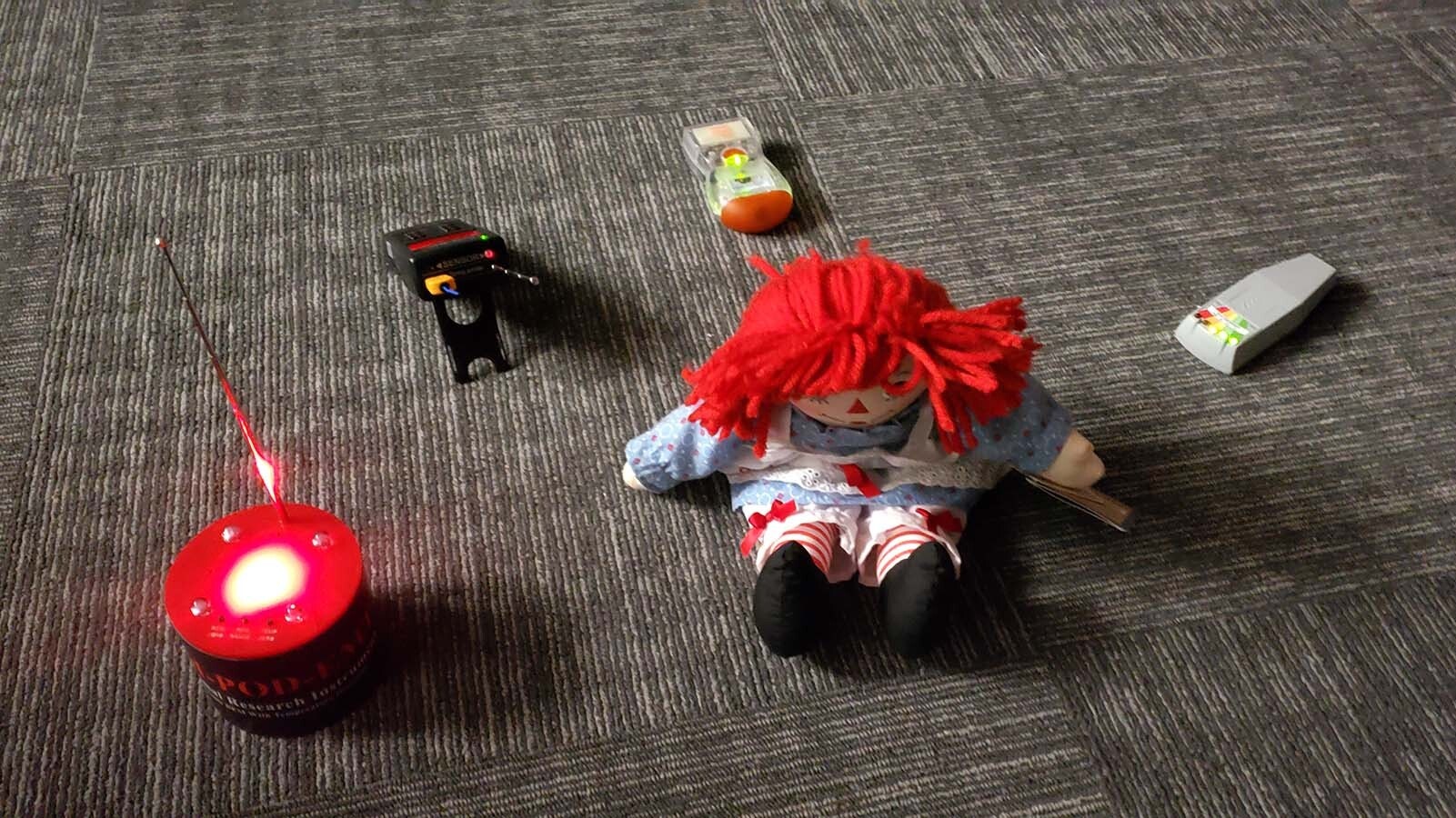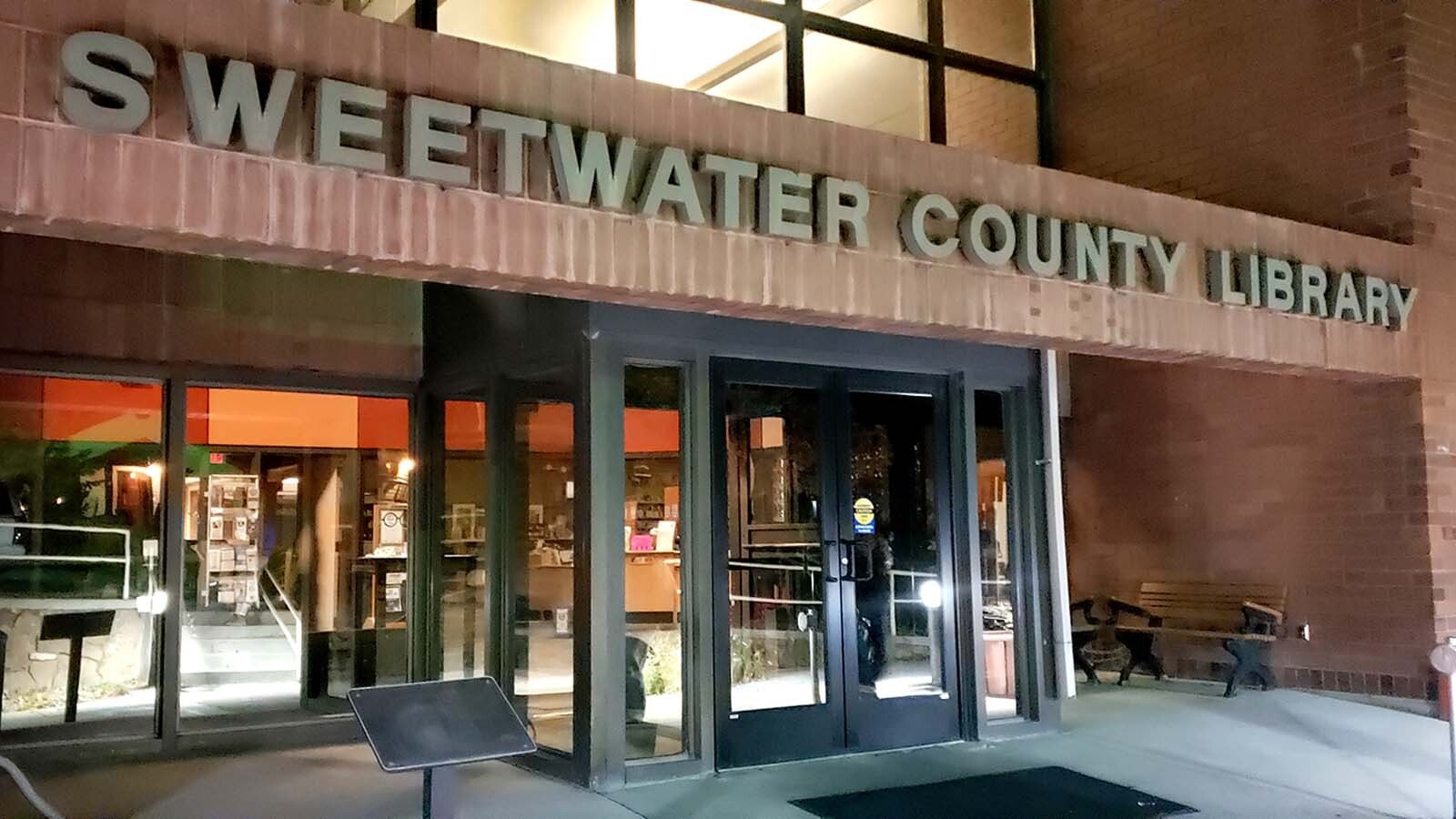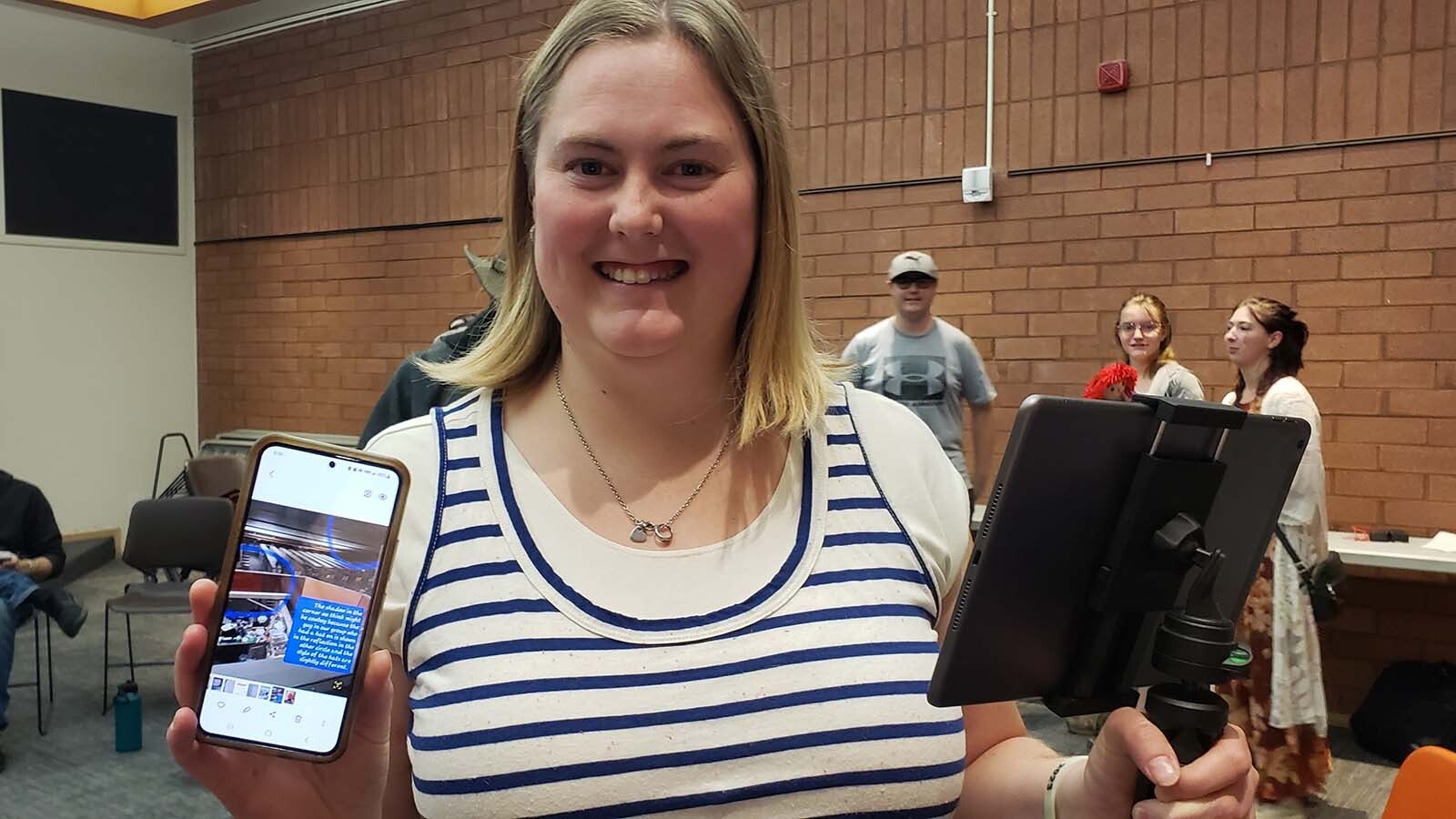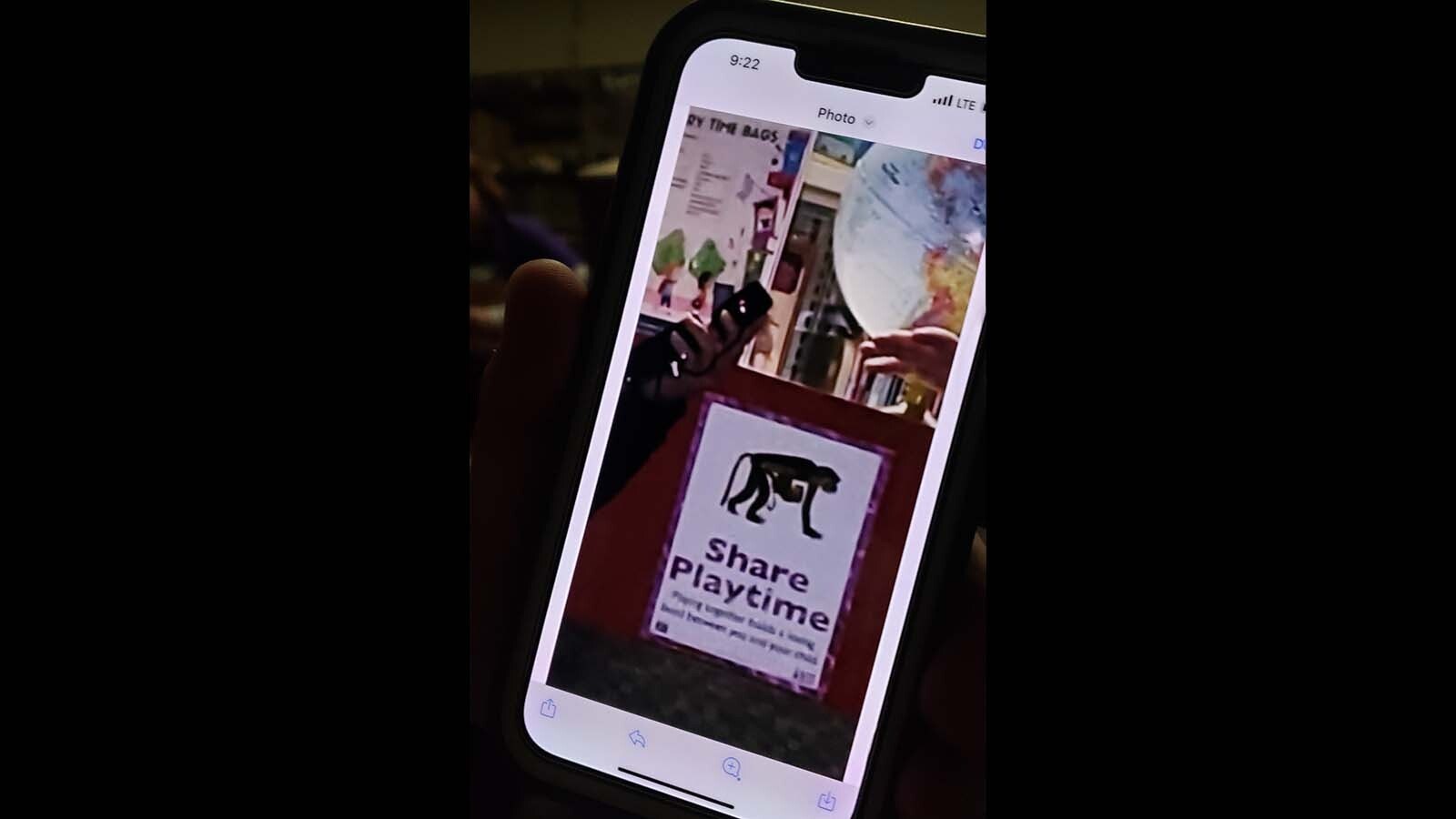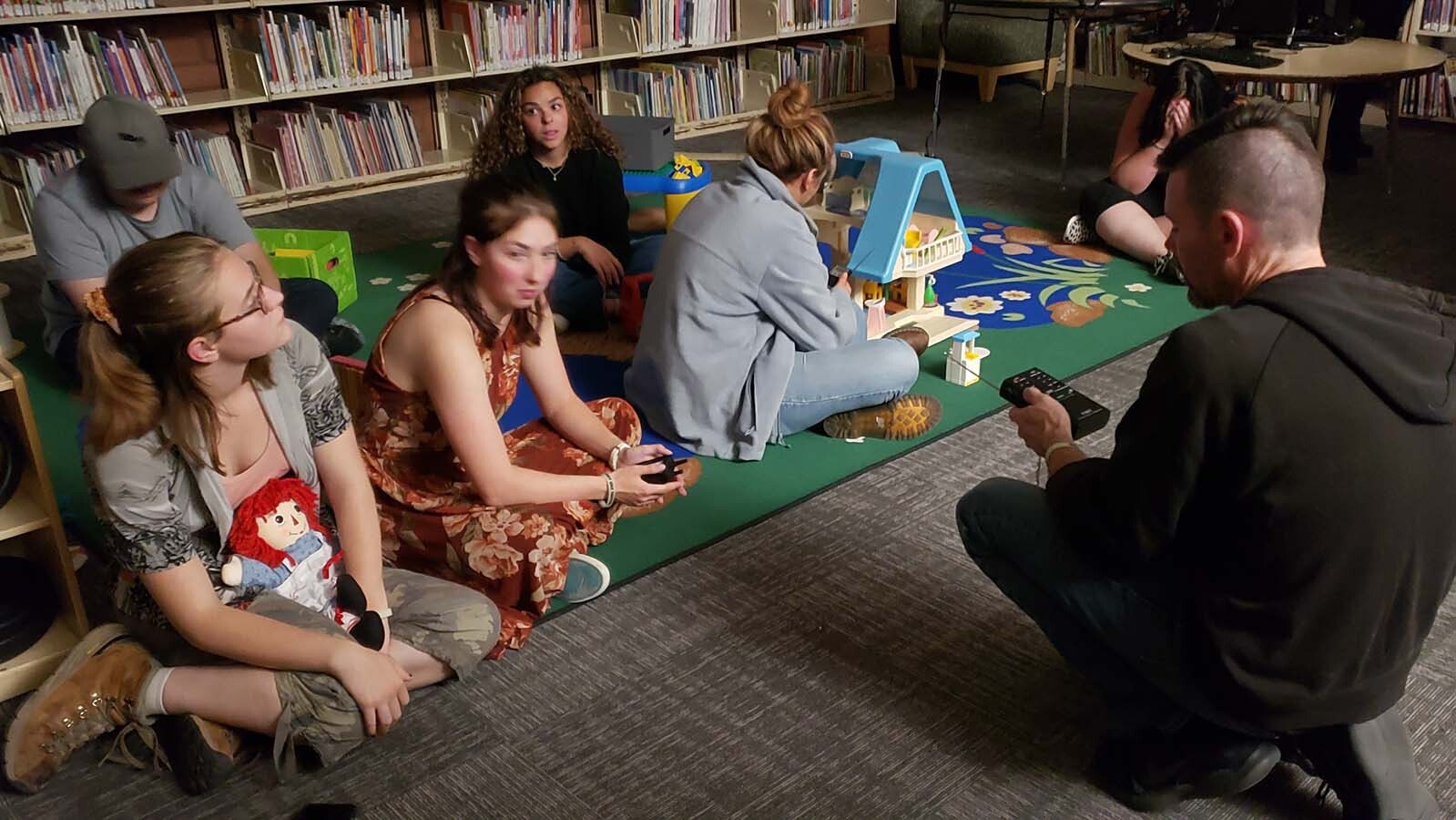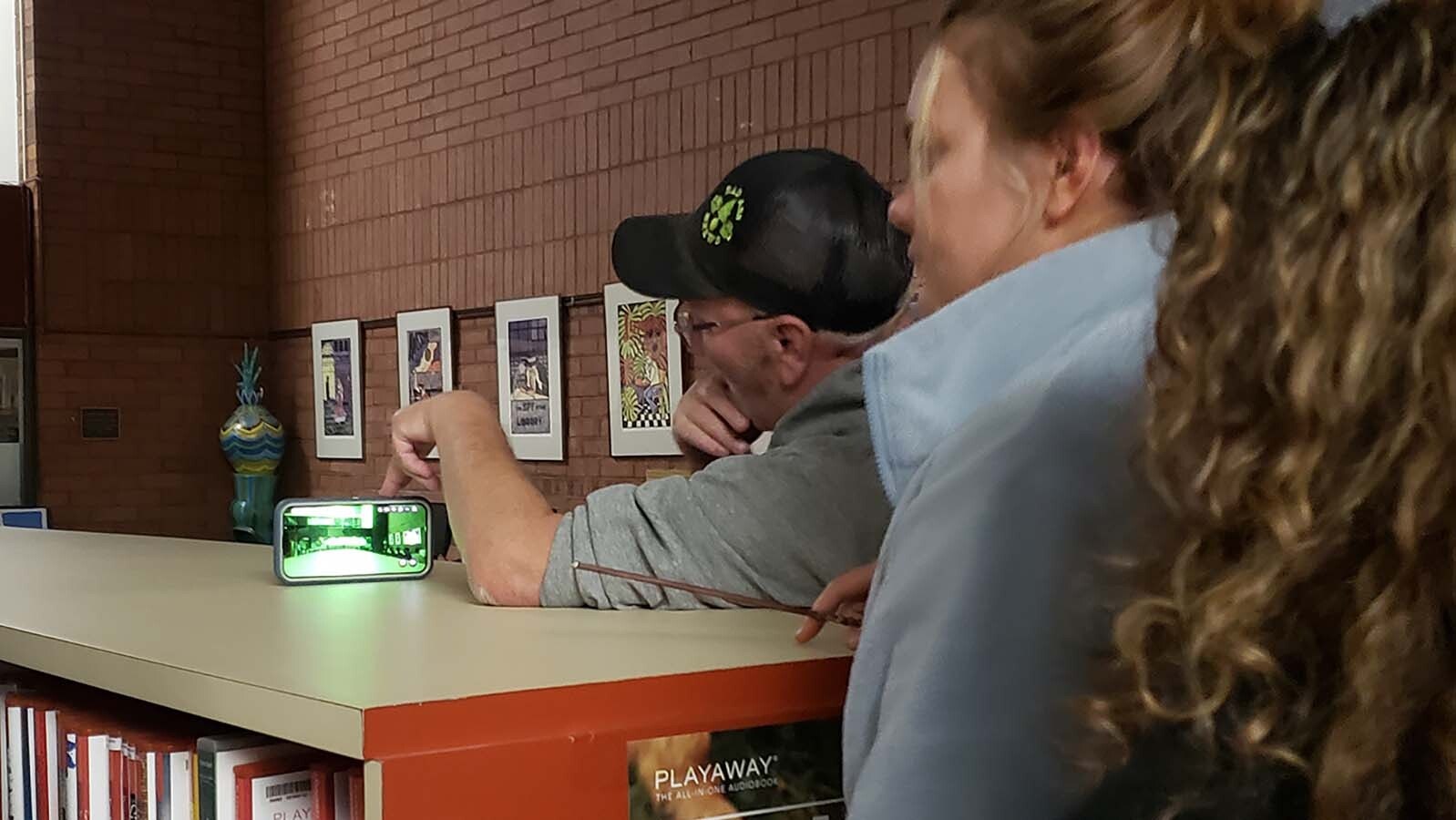GREEN RIVER — Lee Ann Rollins Welstad was playing on a swingset in a nearby playground on the fateful day when construction began for a veterans housing project in Green River.
What happened next could have been something out of a Stephen King novel, but it wasn’t.
It was real life, and she saw it with her own eyes.
“All of a sudden there was a big commotion with the workers looking down in holes they had dug and then they all just left,” she said in an interview that’s reprinted in the Sweetwater County Library’s book “Spirits in the Stacks.”
Of course, Welstad and the other kids at the playground that day grew curious at this. They had to go look at what was in the holes for themselves.
What they saw was a gruesome surprise.
“I had never even been to a funeral before,” Welstad said. “So, I couldn’t believe what I was seeing, especially because they were just skeletons with clothes on.
“I don’t remember how many graves there were, but the two I remember so well were a man in a uniform with a hat and red hair and a bushy red beard.”
The other was a girl, about 2 to 4 years old, with hair that was still beautiful and long on a skeleton still clothed in the remnants of a lacy white dress, and shiny black ankle boots with snaps just above what used to be an ankle.
This macabre scene didn’t just play out once. It would happen again decades later when the Sweetwater County Library was built.
In fact, it happened almost every time earth was disturbed at the site. In 1926, 1944, 1978, 1983, 1985-86, 1996. Bodies were found and removed in all of those years.
Many believe there are probably still bodies beneath the library that will never be removed.
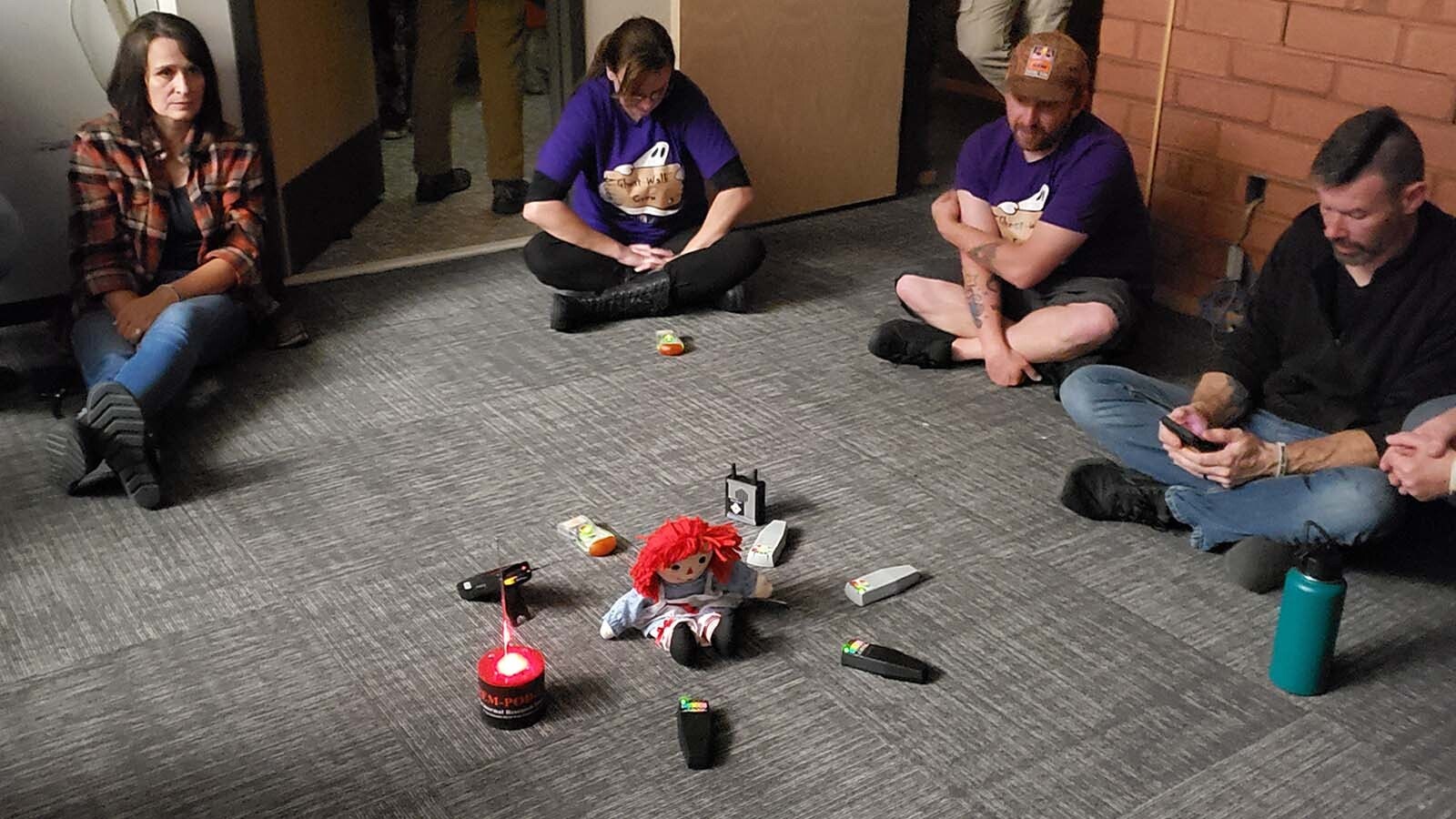
Buried Alive
Some believe part of the haunting of the Sweetwater County Library may be due to the manner of death for some of those who were buried there.
A story told to family members by Captain Bill Harsha, who was a grave digger in 1926, helps illuminate this.
According to Harsha’s account in the book “Spirits in the Stacks,” workers would sometimes inadvertently drop their caskets, causing them to break open.
On one occasion, Harsha looked into such a casket that had a woman with long, flowing red hair, well past her knees. She was dressed in Western attire with two pistols, one on either hip — just like a Calamity Jane — and he took to calling her Two-Gun Annie.
Because she was so interesting, Harsha leaned in to get a closer look.
That’s when he saw something very disquieting.
There were bloody scratch marks in the wood. Not only that, but her fingernails were covered in what looked to be dried blood.
Because of that, Harsha became convinced the woman had been buried alive.
She may not have been the only one.
It was not uncommon for people in those times to be mistaken for dead and buried alive.
An Old Cemetery
The reason there were so many dead bodies at the site is easy enough to explain. The site where Sweetwater County Library was built is the same as Green River’s first official cemetery, established in 1892.
As the town grew, it ran out of burial space in the small plot and decided to build a bigger, better cemetery. Eighty acres were bought from the federal government for the Riverview Cemetery. The plan was to re-inter all the bodies from the old cemetery in the new one.
Family members were responsible for making arrangements to have their relatives moved. Failing that, the municipal authority would do it.
From here on, the tale gets more complicated.
According to historical records, there was a smallpox epidemic that caused some concern at the time these bodies were to be moved. It was believed at the time that smallpox germs could persist for 100 years in the soil. Given that, people were understandably reluctant to disturb those remains.
On top of that, there were several unmarked graves there.
Some of those unmarked graves were Chinese railroad workers who’d died during the epidemic, but some were bodies that may have never been recorded at all because of the way things were handled then.
Fast-forward many decades. What was and wasn’t done, and why, becomes a little fuzzy. And the official record, that all bodies had been removed, was taken at its word.
Restless Land
That housing for veterans that was built on the land in 1944 didn’t last long. There was so much shifting of the land, the homes became unsafe to live in and were torn down in 1956.
Some with a civil engineering background say that shifting was because of layers of clay that, when wet, are slippery and prone to sliding. It doesn’t help, then, that a natural spring runs beneath that area.
Others believe it’s because of the cemetery itself. The gravesites are all holes in the ground, which would have a tendency to shift and settle. And, as bodies decay, that’s only going to continue, likely for many many decades.
But there are also those who feel there is something … restless … that remains in the location. The ground cannot rest because of that energy.
Regardless of the cause, shifting ground is still an issue at the site. The library has been shored up three times now, once in 1986, again in 2007 and, most recently, in 2014.
The veterans housing “sat empty for a long time, except for a swingset,” Tiffany Kennah, a volunteer helping with a Sweetwater County Ghost Tour, told recent tour participants.
Children playing on the swings would often find bits of bone still in the ground, she added. Later, after the swings were removed, people reported something even more disquieting.
“(Some people) can still hear the swing sets, and there isn’t a playground around here to make that sound,” Kennah said.
Supernatural From Day One
In the late 1970s, a location was needed for a new and larger public library. The Sweetwater County Library was outgrowing its charming, but small, Carnegie Library.
The veterans’ housing land was a large empty space, a good, central location in town, yet not developed. It seemed an ideal choice.
Who really believes in ghosts anymore anyway, right?
Site work for the new library began in 1978. No sooner did earth begin moving than more bodies were uncovered.
Workers at the site reported tools going missing, noises they couldn’t explain. Some even claimed to have seen apparitions.
“Some of the workers were really creeped out by it and refused to help them,” Kennah said.
Despite these occurrences, the library was finished in 1980. It wasn’t even open a day, however, when odd things started happening.
Staff reported hearing their names called but, when they looked, no one was there. Electronic devices would turn on and off for no reason.
Over the years, there has been the sound of swishing skirts, the smell of pipe tobacco smoke, crying in the bathroom and, one day, the sound of a cutting board moving.
When that was investigated, a staff member reported the arm appeared to still be moving, all … by … itself.
Sometimes, staff also reported seeing apparitions.
Don Leasor, who was a custodian at the library starting in 1986, reported seeing a ghostly woman while he was vacuuming one night.
“She was bent over with her hands on her face, like she was crying,” he wrote in his own “Spirits in the Stacks” account. “After staring at it for about a minute, it looked up at me and then stood up. And she had an 1800s dress on. She stood there for 30 seconds, and floated along the wall and went through the curtains and the ceiling with a popping noise.”
Leasor hasn’t been the only one to see an apparition in the library.
People have reported seeing a ghostly figure wearing a top hat, a lady with a “mean face,” a man who appears to have an astronaut-like helmet on, a man running with old-fashioned pants that end at the knees, a small girl who stands next to people in the bathroom washing her hands, and more.
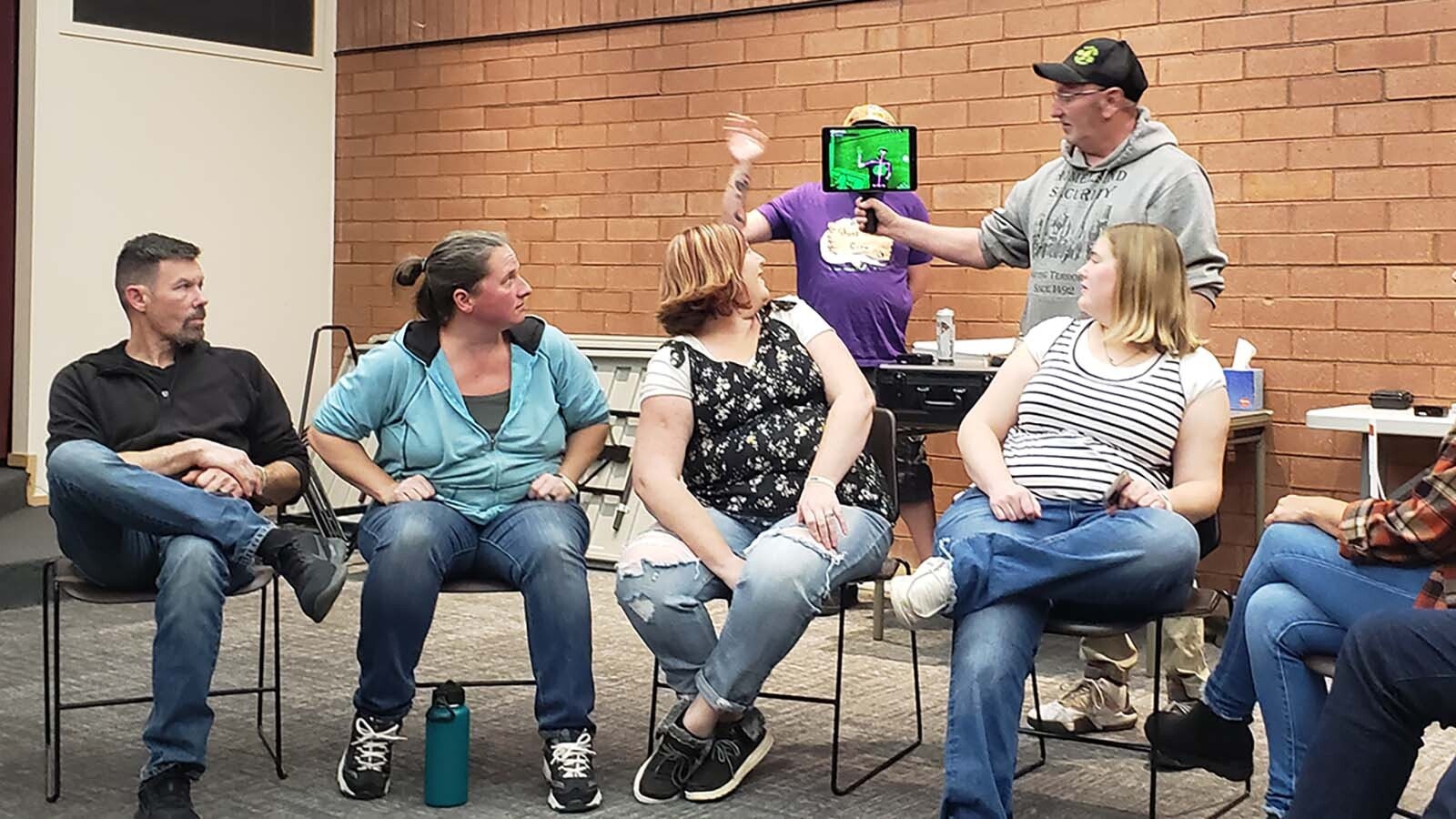
The Ghost Tour Era
At first, there was a code of silence about all of these things. Don’t talk about it, and maybe it will go away.
But it didn’t.
Finally in 1993, an employee named Micki Gilmore, who wrote “Spirits in the Stacks,” which collects all of the experiences in one handy 169-page volume, convinced head librarian Pat LeFaivre to create a ghost logbook to record all the supernatural experiences that couldn’t be readily debunked.
Today, the ghost logbook fills two, 3-inch-thick three-ring binders with the personal accounts of visitors and staff who saw or heard something they couldn’t explain at the library.
Library staff try to debunk these accounts before they go into the ghost log. For example, in one case, a woman’s odd photo turned out to be an odd trick of light involving a house plant.
In another case, a ghostly figure on a tabletop turned out to be the reflection of a human cutout that was at the library.
Ghost tours began at the library in 2006. They’re run by volunteers who are quick to stress that the tour is not intended to be a haunted house or Halloween prank.
“We don’t stage anything, we don’t want to scare you,” Kennah said. “Nothing that is here is anything that we have done. We can’t control spirits or anything. They do what they want to do.”
And they do it when they want to do it. Often, that doesn’t happen to be Halloween, Kennah added.
“We don’t allow any provoking or disrespect,” she said. “They were someone’s loved one. You want to be respectful.”

Paranormal Investigations
The ghost tours are essentially a continuing series of paranormal investigation. They are run by volunteers and a local paranormal investigations group, who explain the use of electronic gadgets intended to help the living interact with spirits.
Visitors are invited to participate in the experience. In fact, they’re given the equipment to conduct their own investigations on the spot. These include spirit or ghost boxes, which scan AM and FM radio frequencies for disturbances that sometimes come out as intelligible words, and K-IIs, which will light up whenever something is disturbing the electromagnetic field.
Among the newer devices is an electronic scanning device that shows the shape of such disturbances on an iPad. That’s been used to watch ghost children playing in the children’s area, or sometimes dancing over in the young adult section.
These gadgets are all passed out to participants to use themselves during the tour. The idea is that members of the public run the equipment to see for themselves what is or isn’t at the library.
The tour generally trails through all the spots where paranormal activity has been reported, minus a few that are undergoing renovation right now.
The tours are interesting, even for skeptics like Anna Kimball, who heard about the ghost tours this past summer from her friend, Cheyenne Hume. She was hoping for her first ghost experience at the event, but she’s not sure anything happened.
“I still am a skeptic, but there was some stuff that I wasn’t expecting,” she told Cowboy State Daily at the conclusion of the tour. “Like, the little kids kind of dancing on that one iPad thing. And then, when Cheyenne and I were talking to the spirit box, and it was saying a couple of things, like I think they said my name to me.”
It may not have been a real ghost, but Kimball left intrigued by it nonetheless.
“There was still a lot that I wasn’t thinking would happen,” she said.
Renée Jean can be reached at renee@cowboystatedaily.com.

